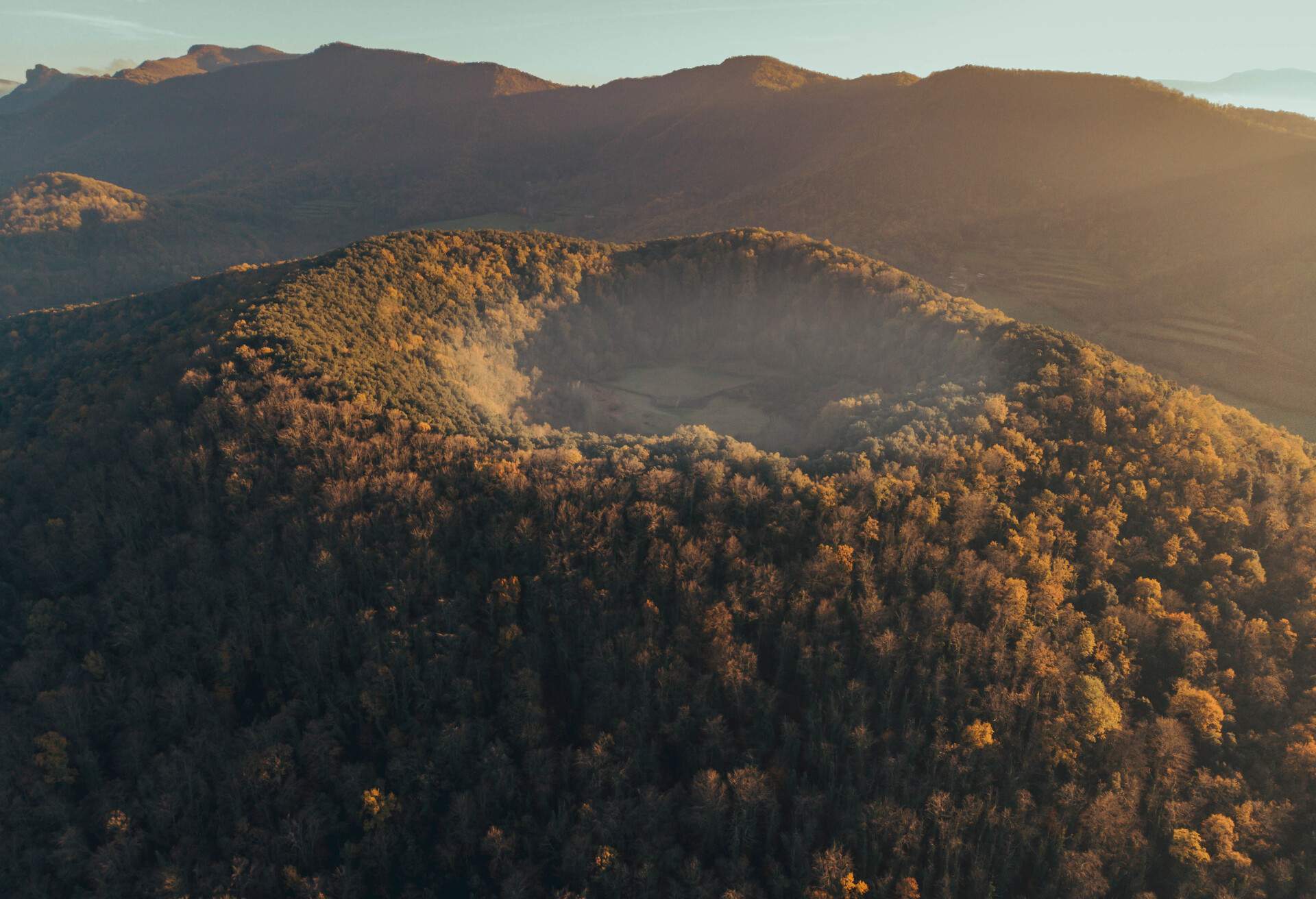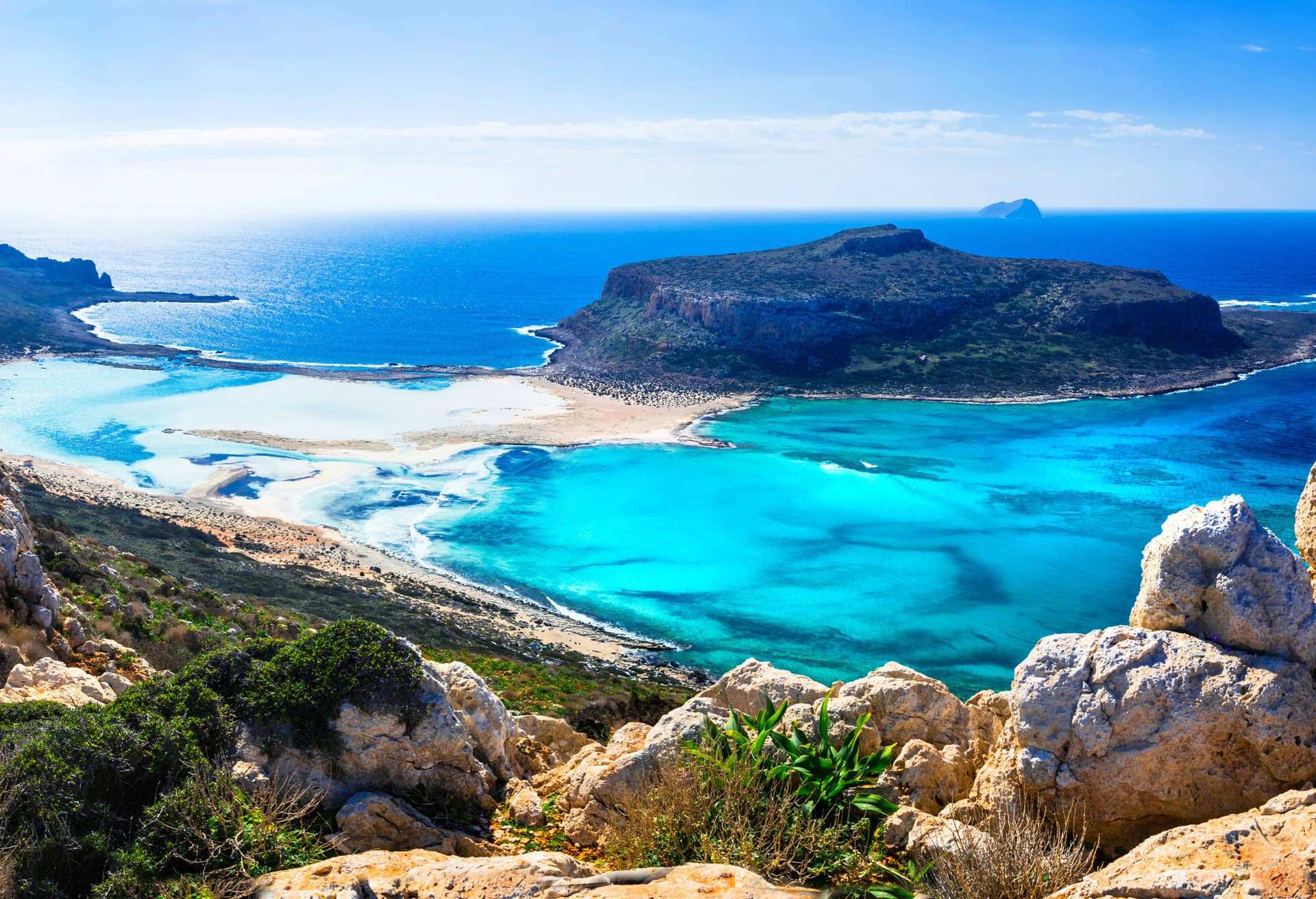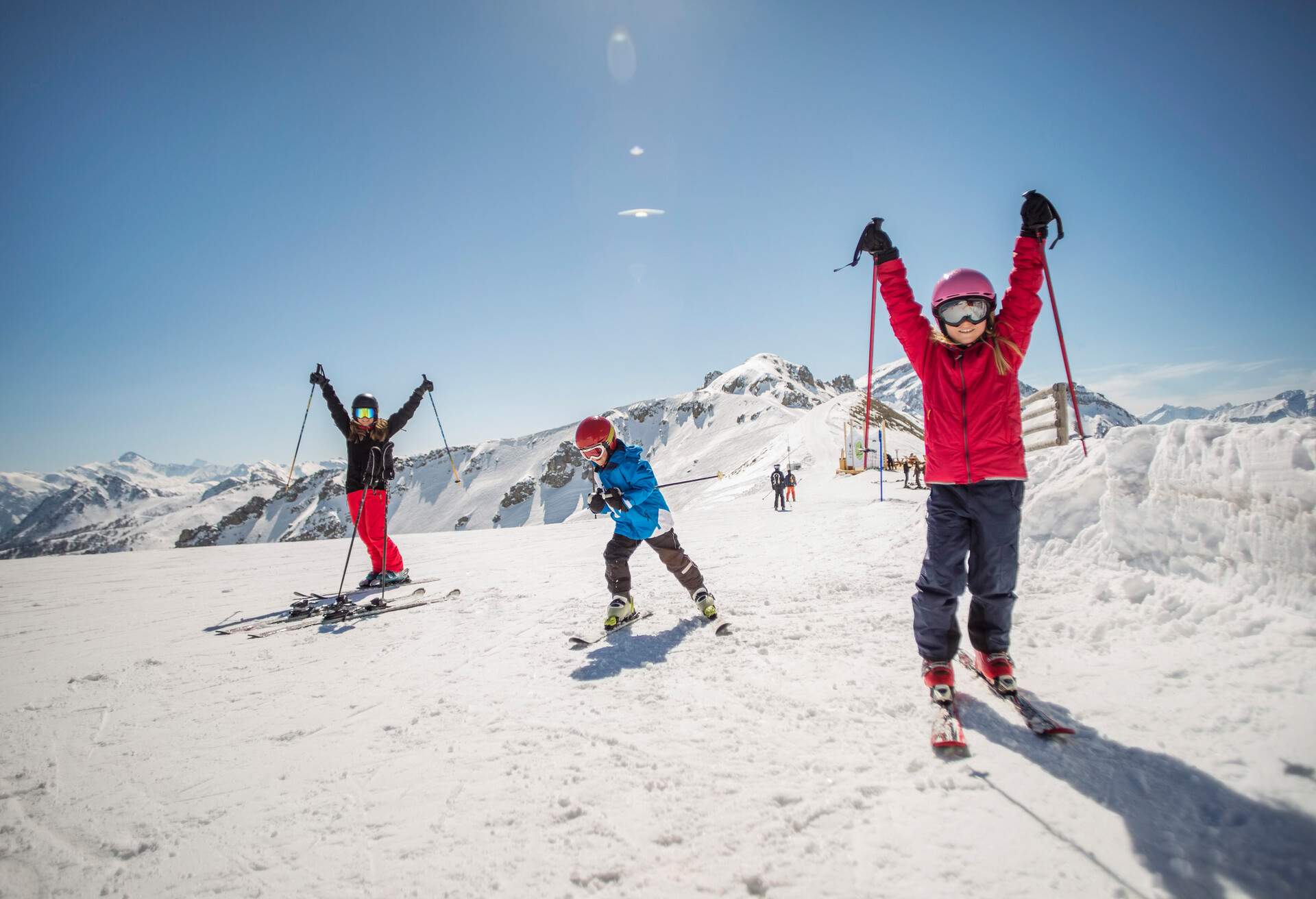Active volcanoes in Europe provide backdrops for some of the most beautiful and spectacular landscapes on the planet. But while they possess awesome beauty, these behemoths also harness incredible power, capable of widespread devastation and loss of life. In this series, we’ll travel across the continent for an exciting look at some of these pyrotechnic marvels and to provide informative details on their origins.
Classifying active volcanoes in Europe
The study of volcanology has allowed us to uncover fascinating facts about these natural wonders across Europe. Many were formed by plate tectonics, specifically the subduction of the Eurasian Plate under the African Plate. As we take a closer look at Europe’s active volcanoes, some parameters are required. For example, if an active volcano is defined as one which has erupted over the past 10,000 years, how do we narrow down our list? In this instance, our search profiles only “officially recorded” eruptions since 1900.
We’ve also tackled the issue of “future eruptions”, which falls under the scope of an active volcano, and have identified a tantalising new prospect already making its presence felt. So here’s our list in no particular order.
Eyjafjallajokull, Iceland
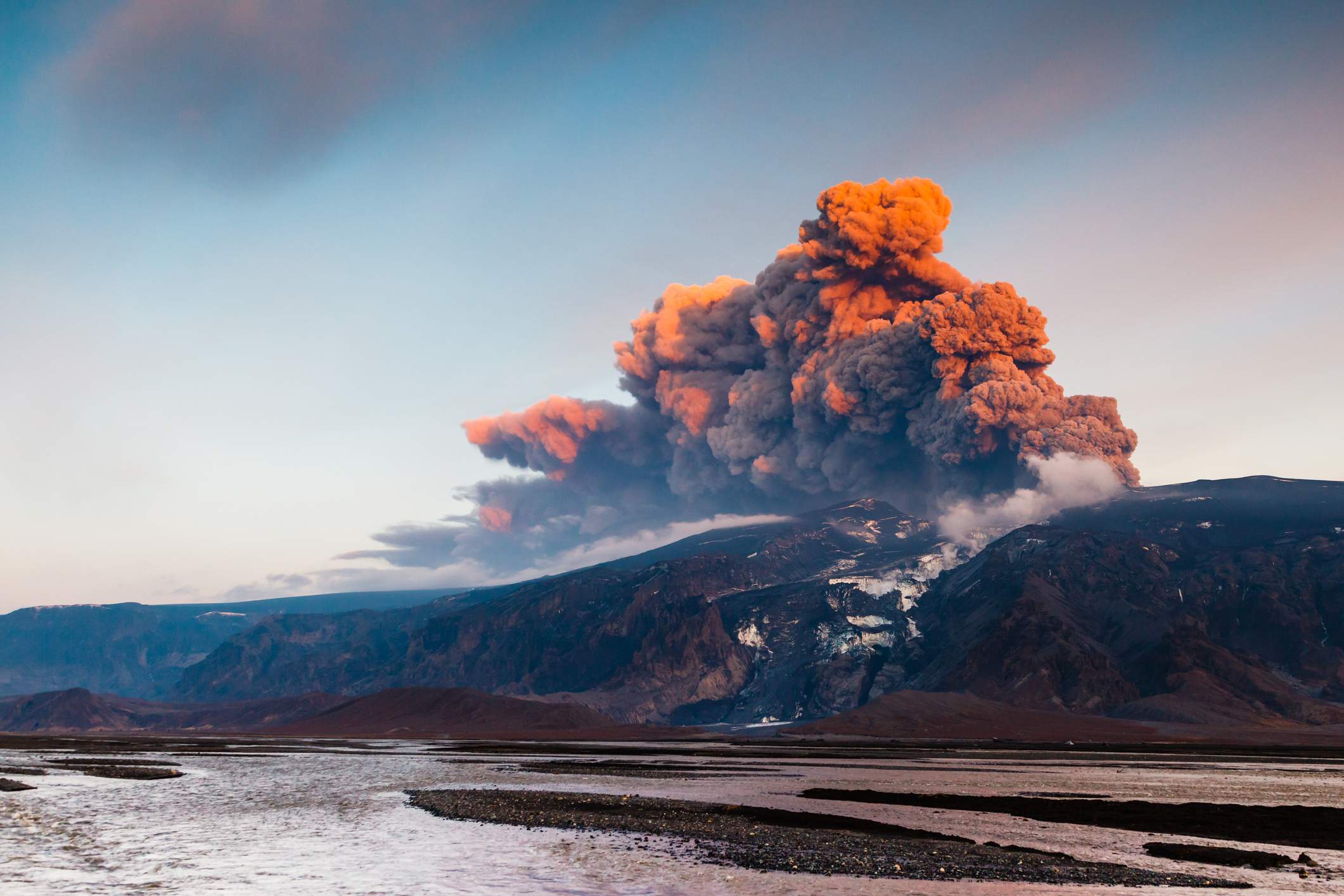
A few years ago, there was a volcanic eruption in Iceland that effectively paralysed air traffic patterns in Northern and Western Europe for seven full days. Eyjafjallajokull, the culprit, is a composite (conical shape) and the type responsible for powerful eruptions of smoke and ash in addition to massive lava flows. It is also one of a few in the country that is completely covered by ice. If you want to explore the 800,000-year-old ice cap, take a bus from Reykjavik and anticipate about 2h 30min of travel time.
- Height: approximately 5,417 feet
- Last major eruption: 2010
Katla, Iceland
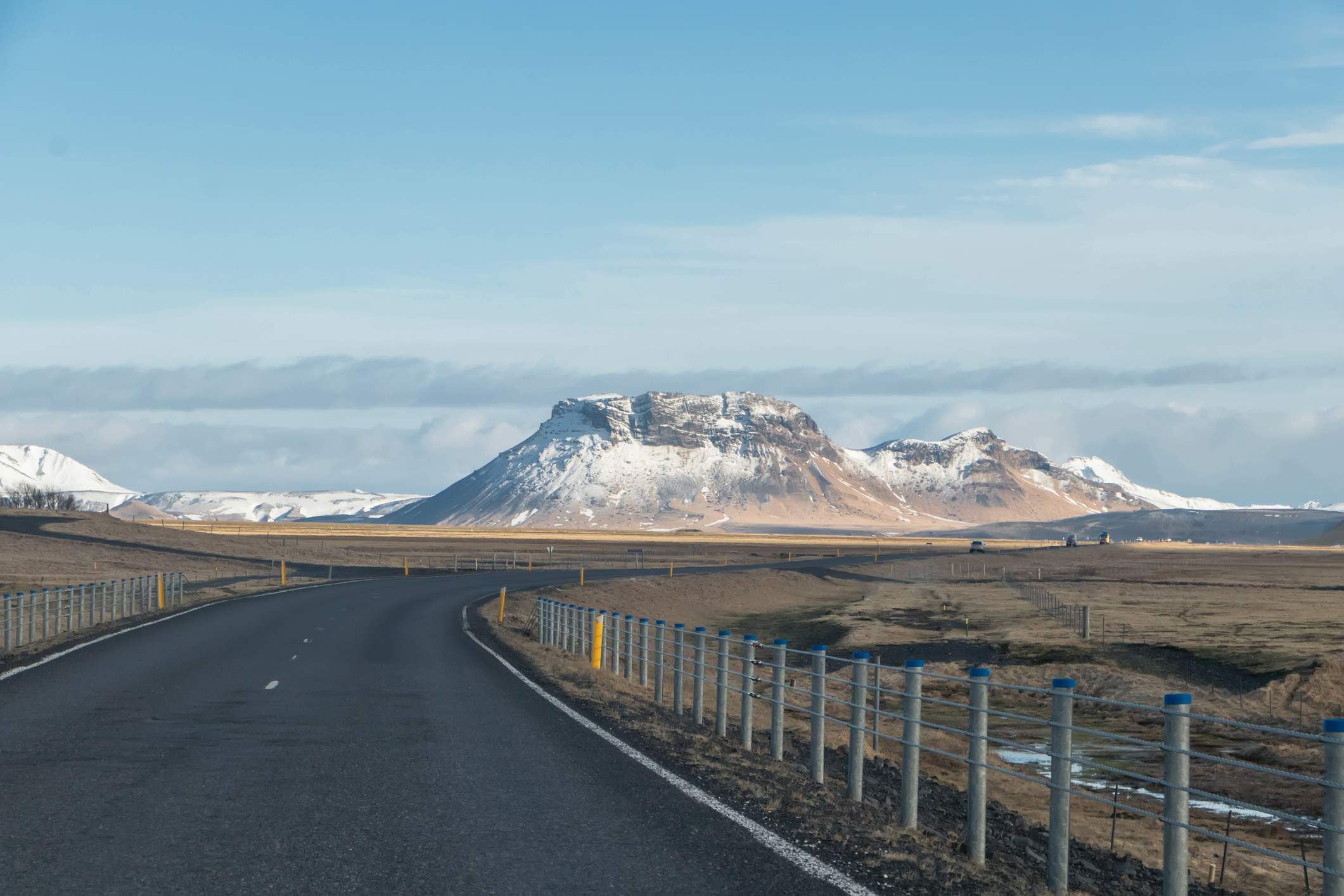
Joining Eyjafjallajokull on our list is another ice-capped volcano less than 20 miles away. Katla sits under the Myrdalsjokull glacier but has an extensive complex of features that makes it one of Iceland’s largest volcanic systems. This type of volcano is characterised by a caldera: the hollow that survives after the cone is blown away. Caldera can be dry or filled with water. Katla’s eruptions are responsible for huge ejections of carbon dioxide into the atmosphere, which can cause significant damage. Driving a car to Katla from Reykjavik makes the most sense, and the ride is about 3h each way.
- Height: about 4,951 feet
- Last major eruption: 1918
Santorini, Greece
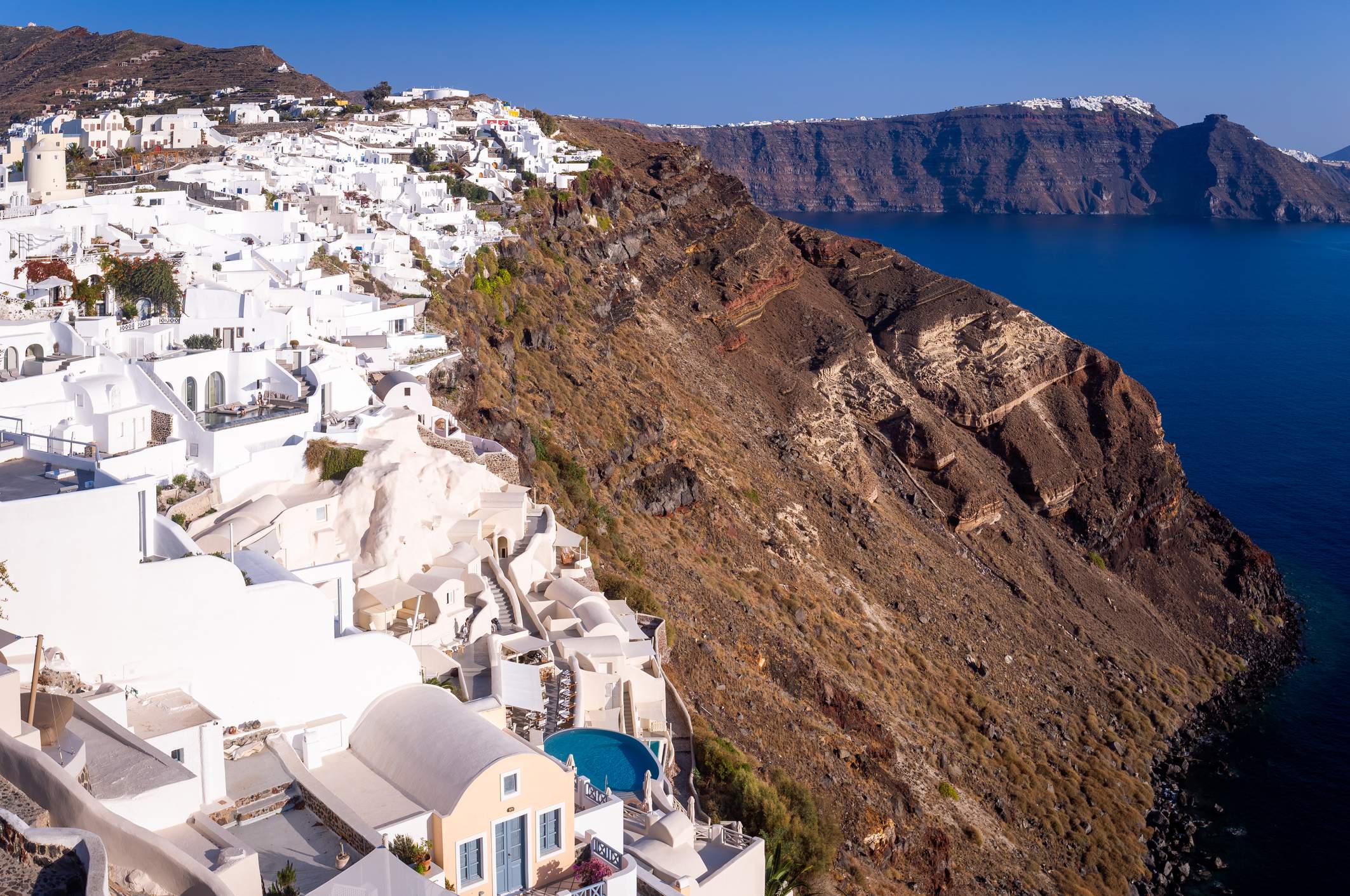
The Santorini caldera is drowned by the Aegean Sea, but it is certainly one of the most beautiful volcanoes in Europe. Nea Kameni was formed within the past 2,000 years and has emerged from the shadow of the caldera. This island volcano has a crater about 1.2 miles across with many sulfur vents and is at high risk of future activity, making it one of the most closely watched volcanoes in the country. You can get a charter boat or pay a fisherman to take you from Fina or Athinos for a better look.
- Height (crater): about 426 feet
- Last major eruption: 1950
Mount Teide, Canary Islands
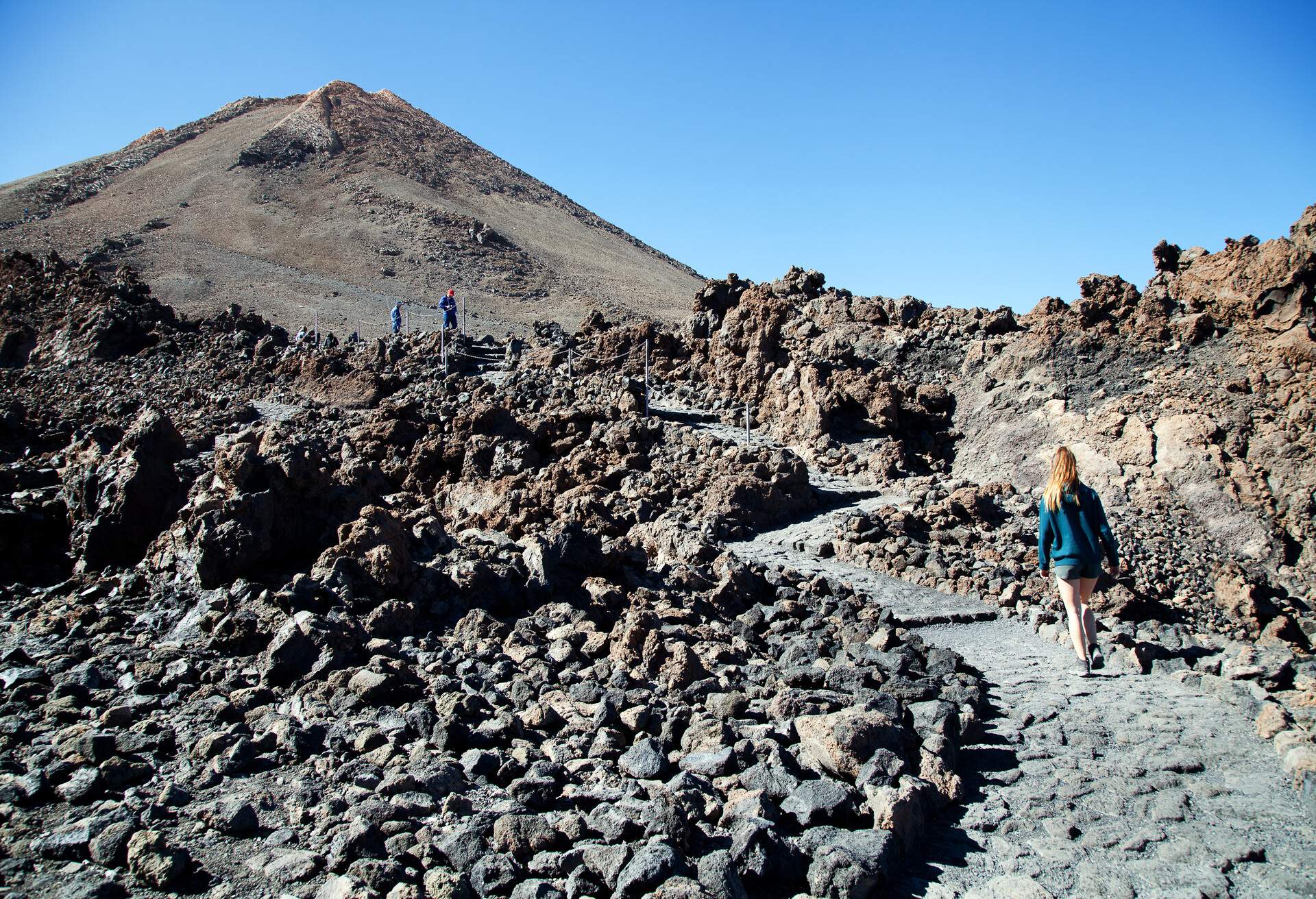
Mount Teide sits magnificently in the midst of Teide National Park, on the Spanish island of Tenerife, and ranks among the highest volcanoes on the continent. Another one of Europe’s composite or stratovolcanoes, Mount Teide was formed approximately 170,000 years ago. It boasts an astronomical observatory and has often been used to research conditions on Mars due to its geology and environment. It has a volcanic index of five and is actively watched for any imminent activity. There are bus routes to the park from central Tenerife, but getting to the top involves a cable car ride and hiking an additional 550 feet.
- Height: approximately 12,188 feet
- Last major eruption: 1909
Cumbre Vieja, Canary Islands
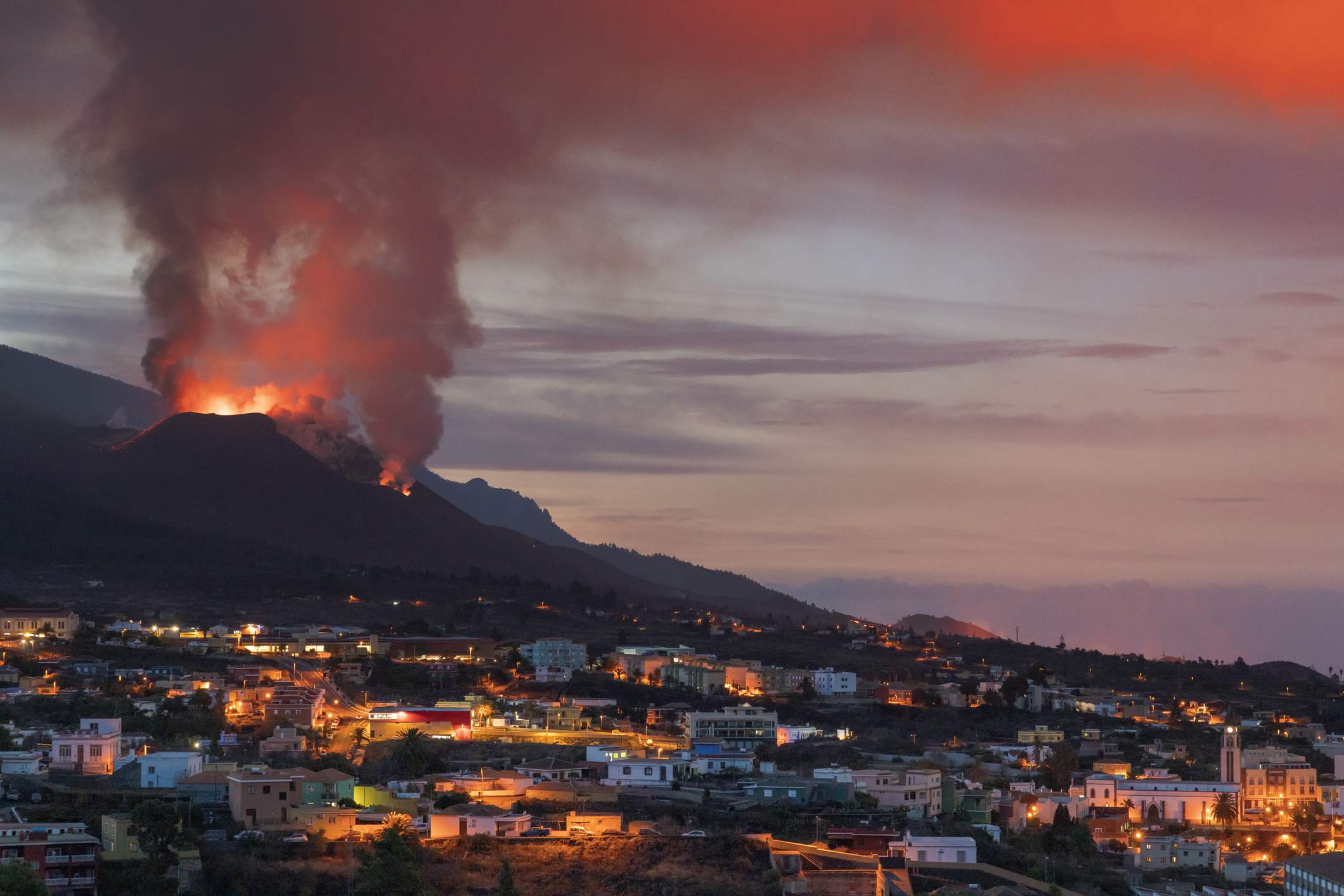
Several miles west of Tenerife is La Palma, and here you’ll find Cumbre Vieja. This volcano was created more than 125,000 years ago and has a water-drenched caldera, but it’s not known for dramatic seismic activity. That said, experts fear it may be close to collapse, due to the frequency of earthquake activity in the area, and fear a major event could trigger a huge tsunami in the region. If you’re in the mood to explore, you can hike from La Palma to Cumbre Vieja National Park; otherwise, it’s about 1h 15min by car from the central part of town.
- Height: approximately 6,394 feet
- Last major eruption: 2021
Mount Vesuvius, Italy
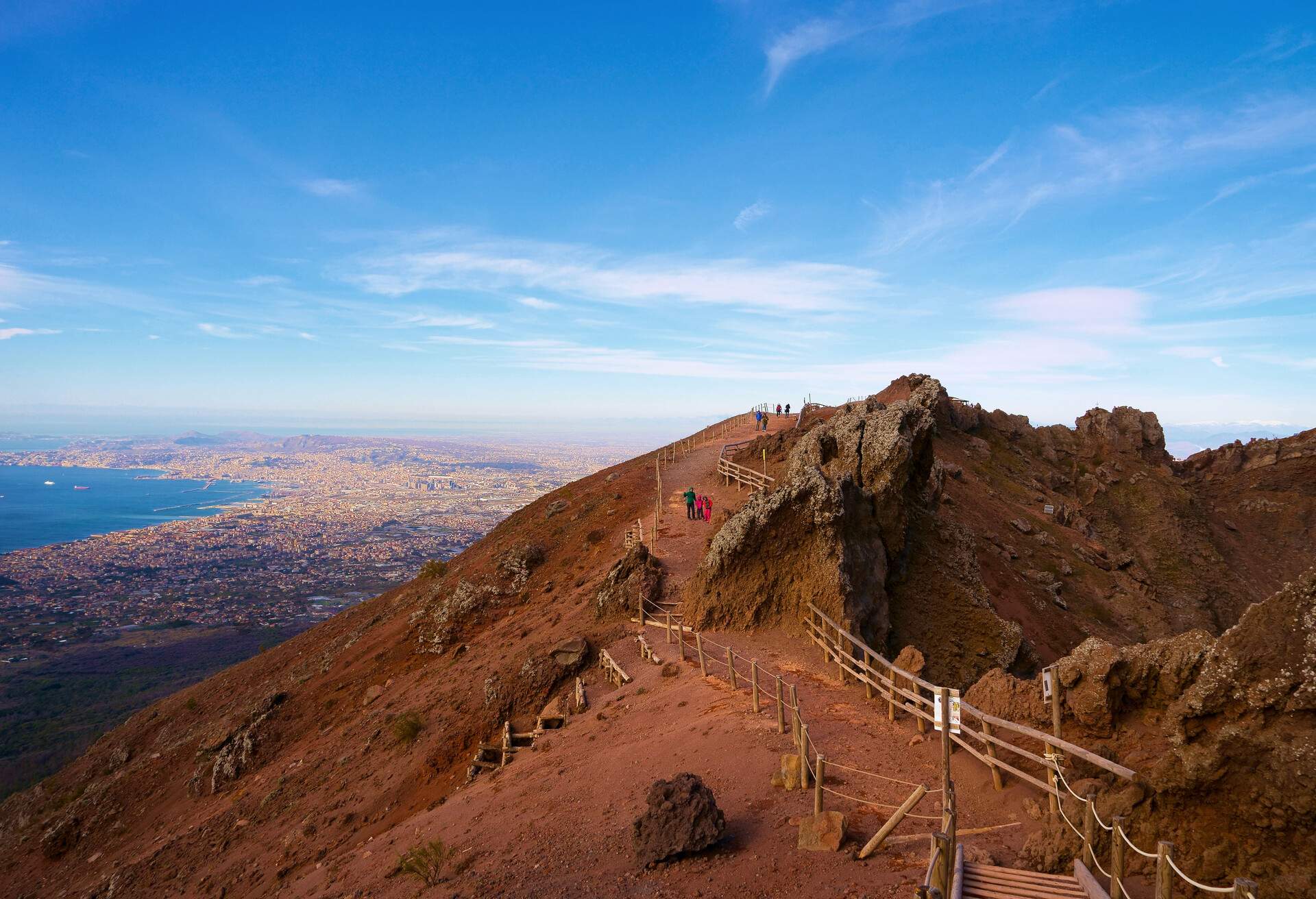
After Iceland, Italy is the main hotspot for serious seismic fireworks, and when it comes to Italian volcanoes, none are as famous as Mount Vesuvius. Dated at over 400,000 years old, its eruption in 79 AD that destroyed the cities of Pompeii and Herculaneum is legendary as one of the most famous natural catastrophes in history. Present-day Mount Vesuvius features a recent cone emerging from its caldera, which categorises it as a somma-stratovolcano. Mount Vesuvius National Park is accessible via Circumvesuviana trains from Naples, which takes about 1h 30min.
- Height: about 4,903 feet
- Last major eruption: 1944
Beerenberg, Norway
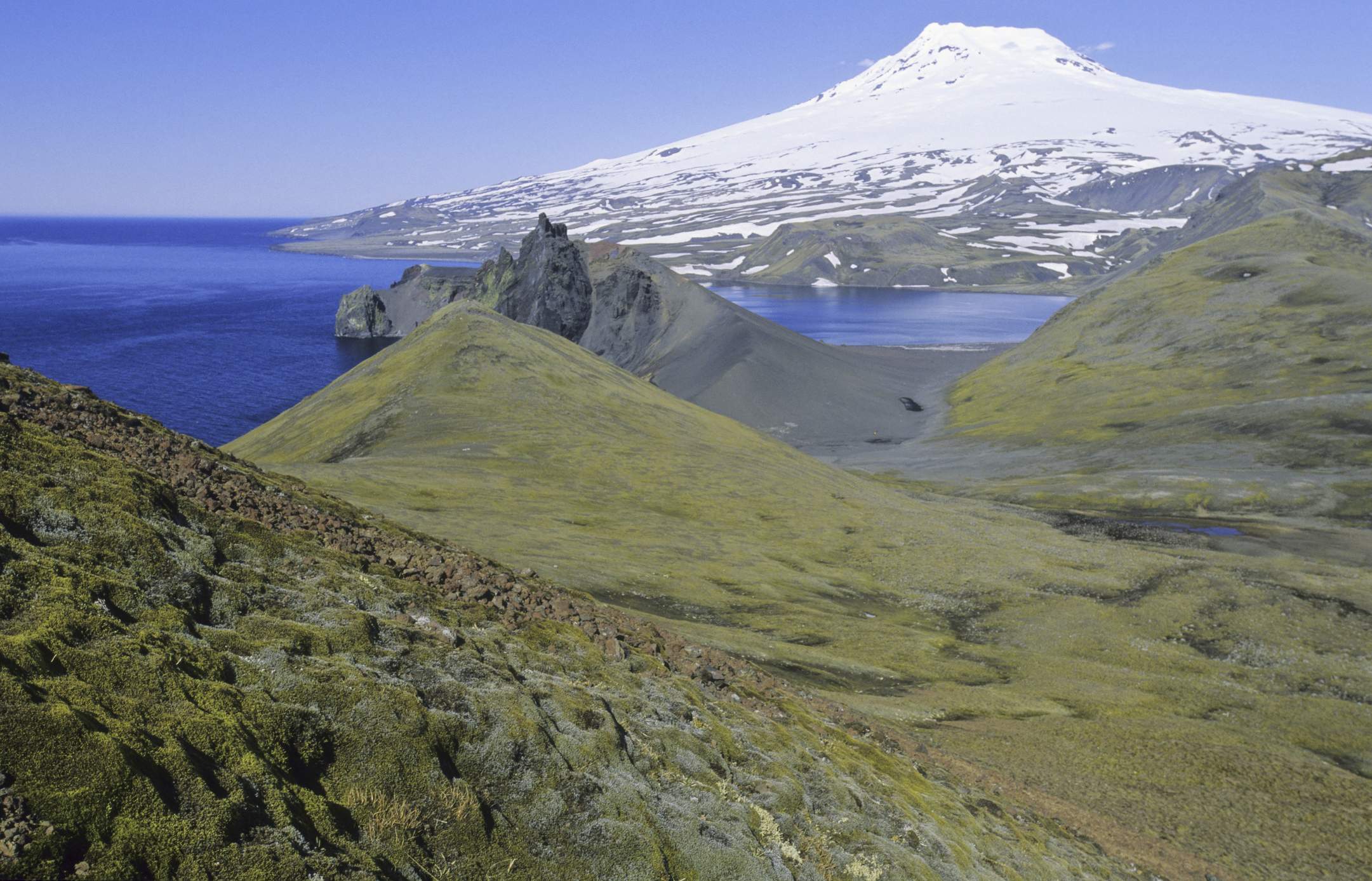
Beerenberg (“Bear Mountain” in Dutch) is a 700,000-year-old composite located on Jan Mayen Island, off Norway. Several glaciers flow from this northernmost volcano on the continent and reach all the way to the Norwegian Sea. For most of the year, Beerenberg’s crater is topped with snow and ice, and its rugged landscape, comprising mainly basaltic lava flows, creates some truly spectacular vistas on this largely uninhabited parcel of land. You’ll need permission to visit, and if you’re successful, there are boats making trips to the island from Tromso.
- Height: about 7,470 feet
- Last major eruption: 1985
Mount Stromboli, Italy
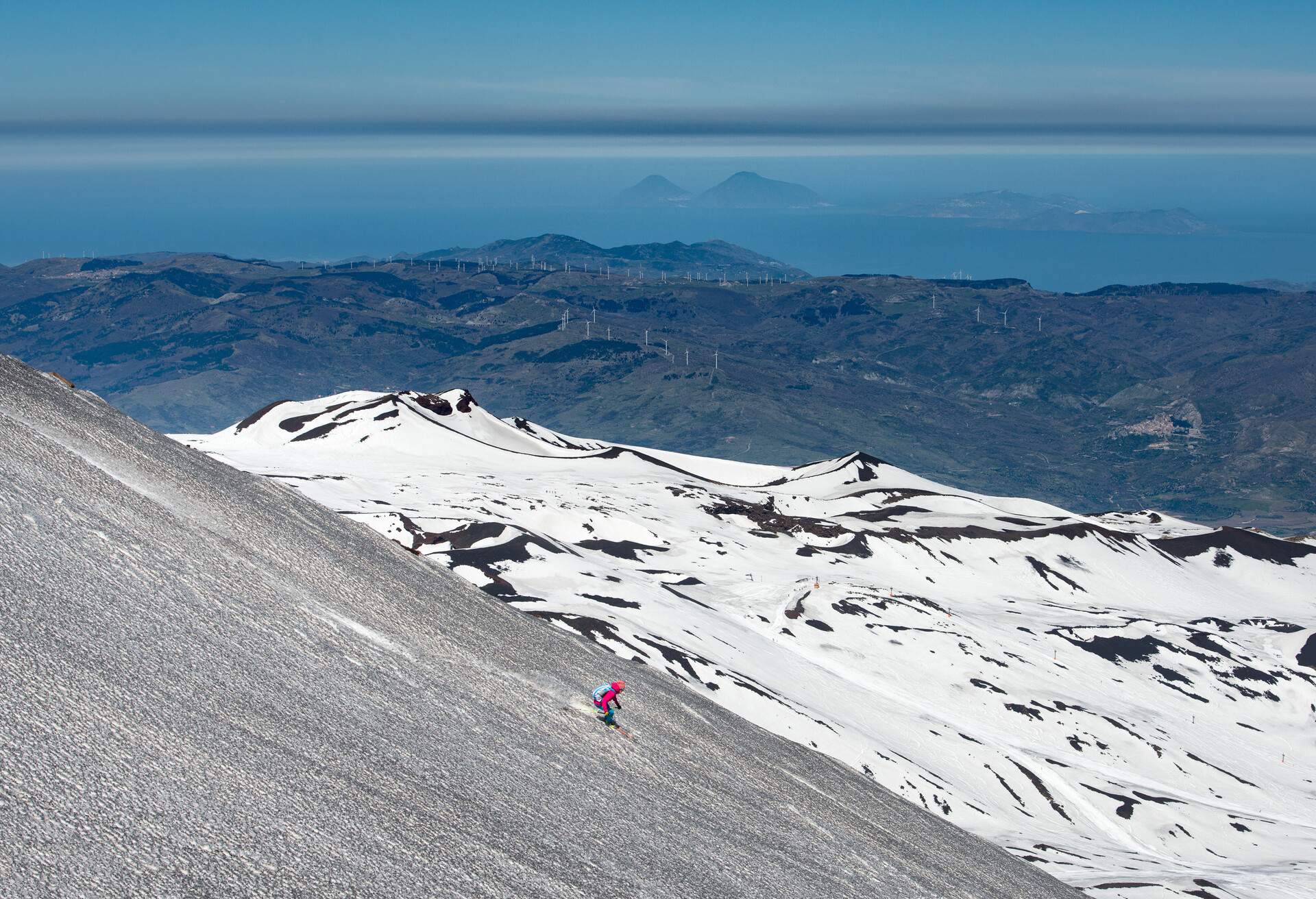
If you like the action up close and personal, then make a beeline directly to Mount Stromboli and enjoy the show. Unquestionably Europe’s most active volcano, Stromboli provides such frequent fireworks that it’s been given the nickname “Lighthouse of the Mediterranean”. It’s hard to believe this composite has been active for most of the past 5,000 years, but considering Stromboli has three active craters, perhaps it’s not that much of a surprise. A ferry from Naples or Palermo to Stromboli is your best bet to get a view of the pyrotechnics.
- Height: approximately 8,860 feet
- Last major eruption: 2021
Marsili, Italy
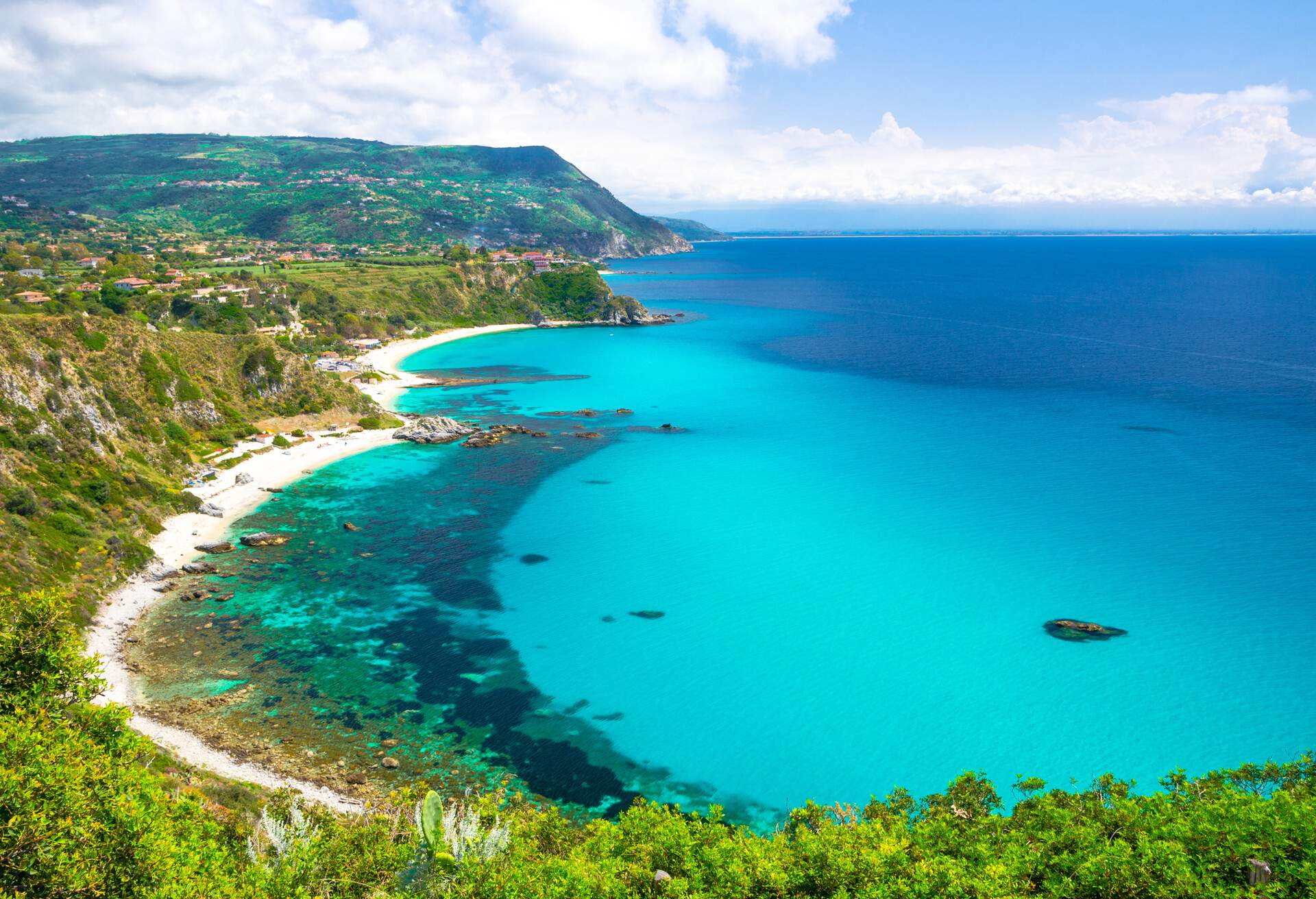
If you want to see this volcano, you’ll need a submersible or a submarine, since it is located some 1,500 feet beneath the Tyrrhenian Sea. This is another of the continent’s volcanoes under constant observation, and Marsili’s gargantuan size has been the subject of much conjecture and hypotheses regarding its destructive potential. Experts date its submarine activity to about 200,000 years ago and express concern that the thin oceanic crust at the base could rupture in the near future.
- Height (submerged): about 9,800 feet
- Last major eruption: unknown
Fagradalsfjall, Iceland
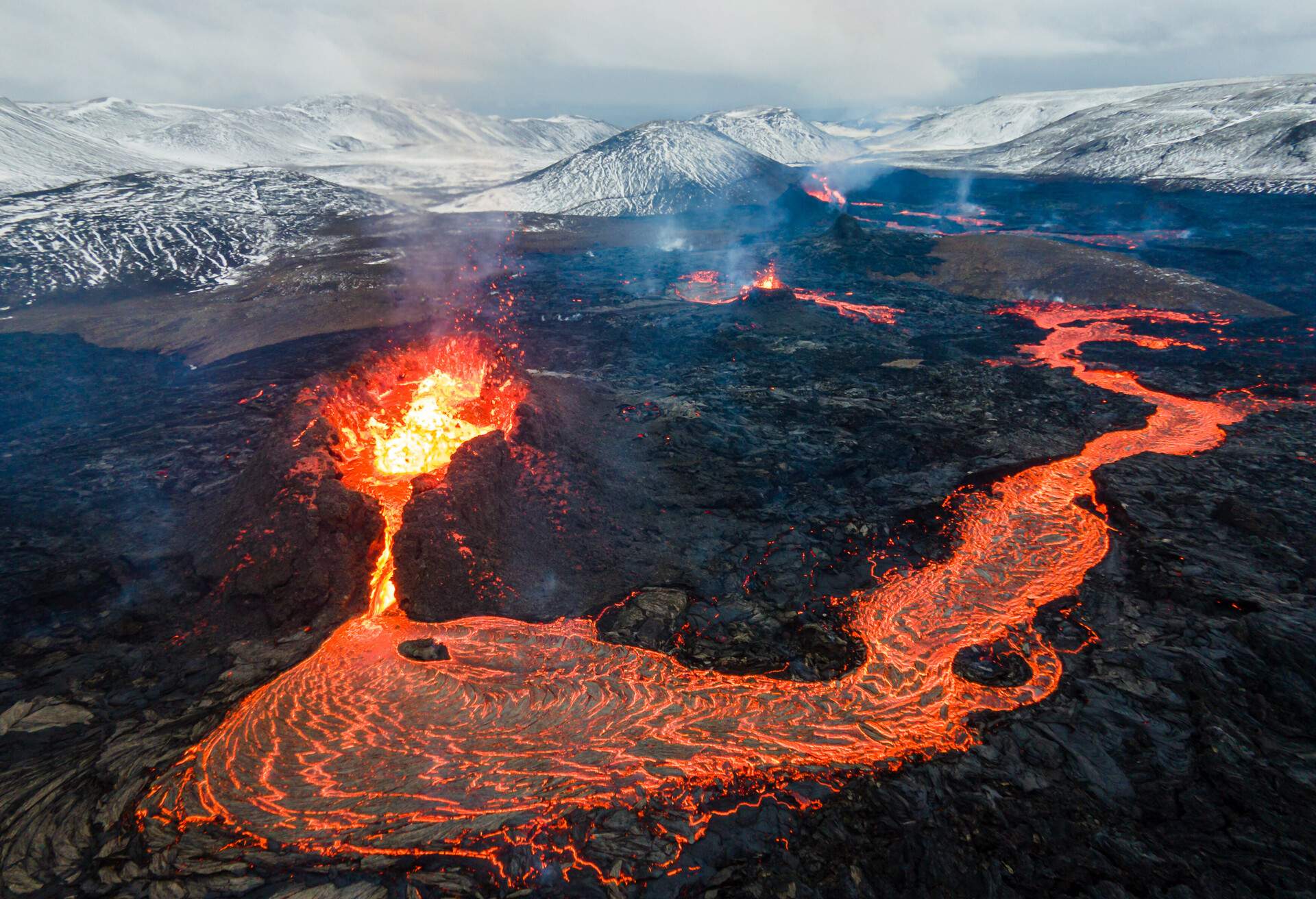
Fagradalsfjall is one of the newest members of the list of Europe’s active volcanoes. The amazing fact here is that Fagradalsfjall lay dormant for nearly 6,500 years before it suddenly unleashed a series of dramatic eruptions within the last few years. Located on the Reykjanes Peninsula, this volcano is about 110,000 years old and is categorised as a tuya (flat-top), which is a rare formation as Europe’s volcanoes go. You can spend time walking the basaltic extrusions and hardened magma flows on Fagradalsfjall’s flanks, since it’s less than an hour’s drive from Reykjavik.
- Height: about 1,263 feet
- Last major eruption: 2021 (Geldingadalir)
Mount Etna, Italy
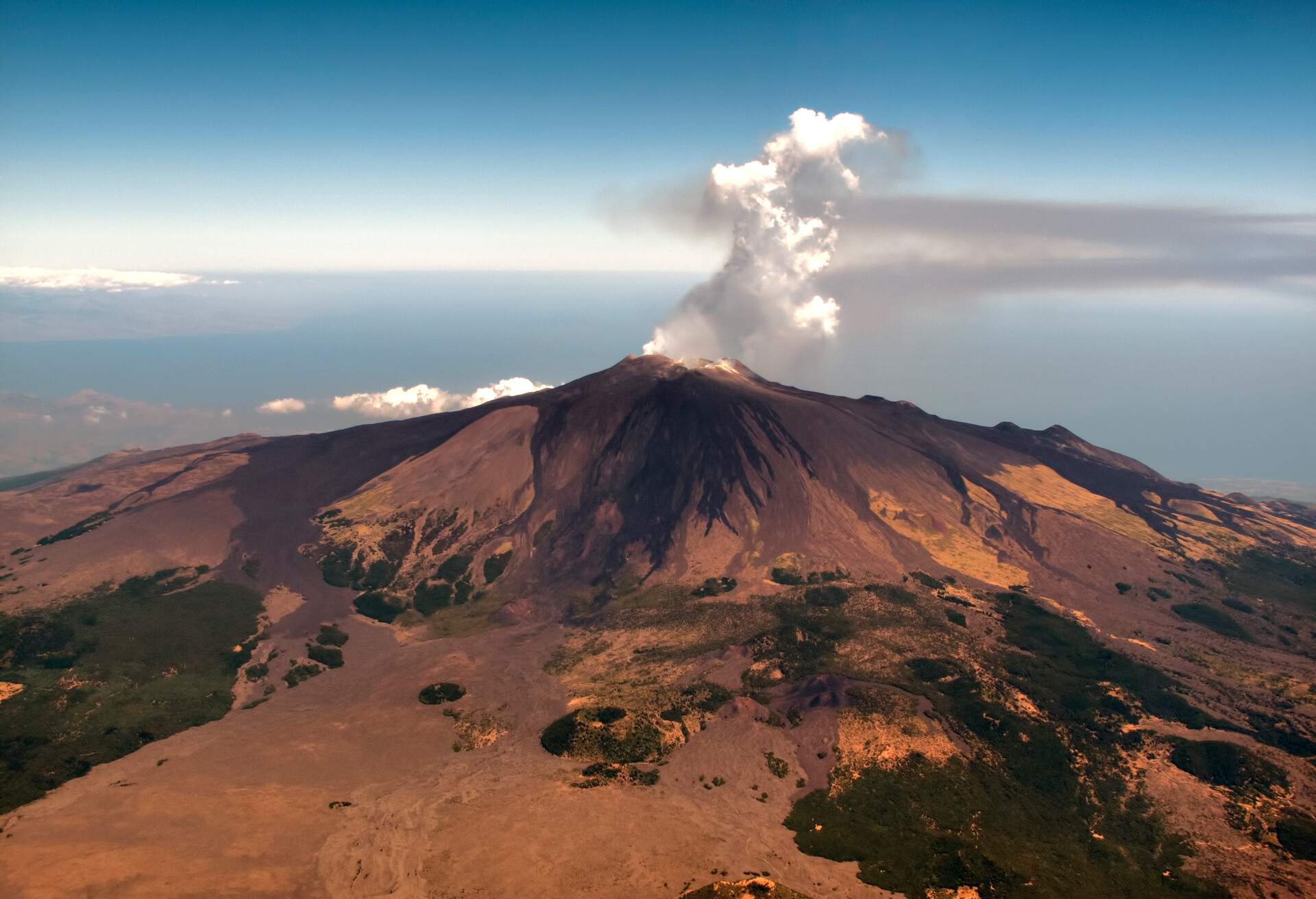
It is perhaps fitting that our list should conclude with the largest volcano in Italy, which is also one of the most active in Europe and certainly one of the most famous in the world. Formed more than 500,000 years ago, Mount Etna is located in the subduction zone between the Eurasian and African plates and is in an almost constant state of excitement, much like her sister Stromboli. Just within the last few years, Mount Etna’s height has increased noticeably due to activity from its five craters, which you can observe with a visit to Mount Etna National Park, near Catania.
- Height: 11,014 feet
- Last major eruption: 2021
We hope you enjoyed our peek at some of Europe’s most active volcanoes. We think many of our choices will make your list, too.
